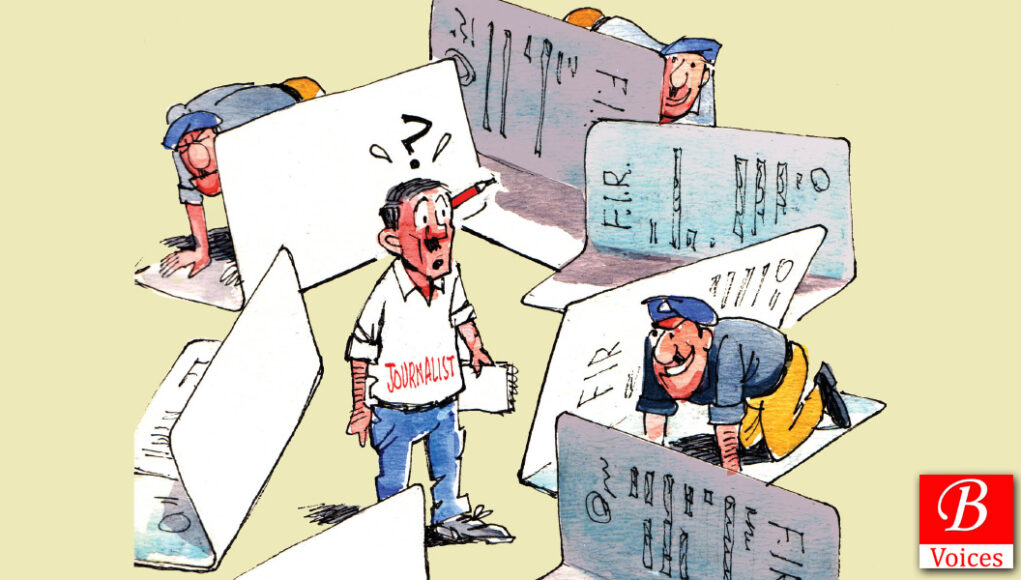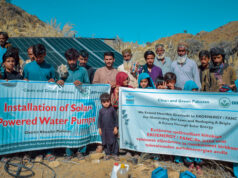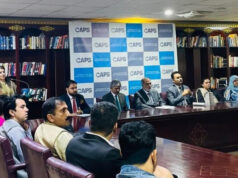Press Release
Islamabad is the “riskiest” and “dangerous” place to practice journalism
ISLAMABAD: A dramatic escalation in the climate of intimidation and harassment of media and its practioners adversely affecting freedom of expression and access to the information environment was discovered, according to media watchdog Freedom Network’s annual state of Pakistan Press Freedom 2021 report.
At least 148 cases of attacks and violations against media and its practitioners, including journalists, took place over the course of one year – between May 2020 and April 2021. This is an increase by over 40% from the 91 cases of violations documented in the preceding year (May 2019-April 2020), the report, marking the World Press Freedom Day globally, including Pakistan, on 3 May, said.
“The increase in attacks on media and its practioners in Pakistan points to a collective failure of government and state of Pakistan to honor the commitment of upholding peoples’ right to speak in the fears-free environment,” Iqbal Khattak, Executive Director of Freedom Network, said on the occasion to mark the occasion in Pakistan.
He said the record registration of 27 legal cases against journalists proved the biggest threat journalists faced during the reporting period as the threat actors moved to adopt sophistication in silencing dissenting voices. “Laws must protect journalists instead of used to silence them,” Iqbal Khattak said.
The report, Freedom Network Executive Director said, was dedicated to late IA Rehman who championed the cause of freedom of expression and journalists’ safety.
Among the most dangerous places to practice journalism were no longer Balochistan or former tribal areas along the border with Afghanistan. Islamabad emerged as the riskiest and most dangerous place for journalists in the period under review with 34% of the violations (51 out of total 148 cases) recorded in the federal capital.
The report reveals that invisible and visible hands have joined forces to tighten the screws on media in Pakistan through various means of coercive censorship, including murders, legal cases, assaults, abductions, detentions, and threats, resulting in squeezing the space for freedom of expression and media freedoms resulting in increasing silence and erosion of public-interest journalism.
The data shows that no place in all the four provinces or federal capital Islamabad is safe – attacks against journalists are taking place everywhere and that shockingly the state and its functionaries have emerged as the principal threat actor wielding the biggest stick to browbeat the media into submission and growing silence.
Key findings of the report include:
The scale of violations against media in Pakistan and their frequency: At least 148 cases of attacks and violations against journalists and media practitioners were documented in Pakistan in the one year between May 3, 2020, and April 20, 2021, across all territories of Pakistan, including the four provinces, Islamabad and Azad Jammu and Kashmir. This is an average of over 12 cases of violations a month – one every third day. The violations included the killing of six journalists for their journalism work and seven other failed assassination attempts, five kidnappings, 25 arrests or detentions, 15 assaults, and 27 legal cases registered against journalists.
The top three categories of violations against the journalists in Pakistan in the period under review included 27 legal cases filed against them (18%), 26 verbal threats of murder or other dire consequences (17%), and at least 25 cases of arrests or detention of journalists by law enforcement agencies (16%). These three categories of violations – legal cases, threats, and detentions – constituted over 60% of the 148 categories of violations against media in Pakistan in the period.
The most dangerous regions in Pakistan for journalists: Overall, Islamabad emerged as the riskiest and most dangerous place to practice journalism in Pakistan in the period under review with 34% of the violations (51 out of total 148 cases) recorded in the federal capital. Sindh was the second-worst with 26% of the violations (38 cases) and Punjab the third most dangerous with 20% (29 cases). These were followed by Khyber Pakhtunkhwa (KP) with 9% (13 cases) and Azad Jammu & Kashmir (AJK) with 6% (9 cases) and Balochistan with 5% (8 cases). No violations were documented from Gilgit Baltistan (GB).
The most targeted journalism mediums in Pakistan: Of the total of 148 attacks and violations against journalists recorded in Pakistan in the period under review, TV medium emerged as the single largest victim of the type of media with at least 79 cases (54%) of the cases against its practitioners. Print media was the second most targeted medium with 58 journalists working for it targeted (38%) while 11 cases (7%) were recorded of online journalists targeted. No targeting of a radio journalist was documented.
The biggest threat actors targeting media in Pakistan: The State emerged as the biggest threat actor against journalists in the period under review as victims and their families blamed it in a whopping 46% of the 148 documented cases of violations against media practitioners. A group of miscellaneous ‘others’ (including feudal lords, land mafia, traders, individual clerics, lawyers, etc.) was the second-largest threat actor with 25% (at least 36 cases) while the ‘unknown’ category emerged as the third-largest category of threat actor blamed by the victims and their family, as well as the authorities and their employers, as being behind violations against 25 journalists (16% cases).
The complete PDF version report may be downloaded from the Freedom Network website – www.fnpk.org
Share your comments!








